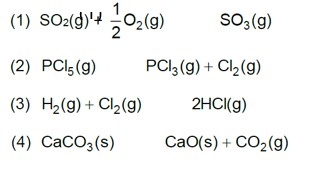Assertion and Reason:
Directions:
(a) Assertion and reason both are correct statements and reason is correct explanation for assertion.
(b) Assertion and reason both are correct statements but reason is not correct explanation for assertion.
(c) Assertion is correct statement but reason is wrong statement.
(d) Assertion is wrong statement but reason is correct statement.
7.74. Assertion: OH– is called the conjugate base of an acid H2O.
Reason: NH4+ is called conjugate acid of the base NH3.
Assertion and Reason:
Directions:
(a) Assertion and reason both are correct statements and reason is correct explanation for assertion.
(b) Assertion and reason both are correct statements but reason is not correct explanation for assertion.
(c) Assertion is correct statement but reason is wrong statement.
(d) Assertion is wrong statement but reason is correct statement.
7.74. Assertion: OH– is called the conjugate base of an acid H2O.
Reason: NH4+ is called conjugate acid of the base NH3.
-
1 Answer
-
(b) Both are correct statements but R is not the reason for A. The acid-base pair that differs only by one proton is called a conjugate acid-base pair. Therefore, OH– is called the conjugate base of an acid H2O and NH4+ is called conjugate acid of the base NH3. If Brönsted acid is a strong acid then its conjugate base is a weak base and vice-versa. It may be noted that conjugate acid has one extra proton and each conjugate base has one less proton.
Similar Questions for you
0.01 M NaOH,
M = 1 * 10-2

pOH = 2
pH = 2
Kp = Kc (RT)Dng
36 * 10–2 = Kc (0.0821 * 300)–1
Kc = 0.36 * 0.0821 * 300 = 8.86 » 9
A(g) ->B(g) + (g)
Initial moles n 0 0
Eqb. moles n(1 – a) na
total moles =
Eqb. pressure
On increasing pressure, equilibrium moves in that direction where number of gaseous moles decreases.
Taking an Exam? Selecting a College?
Get authentic answers from experts, students and alumni that you won't find anywhere else
Sign Up on ShikshaOn Shiksha, get access to
- 65k Colleges
- 1.2k Exams
- 679k Reviews
- 1800k Answers


